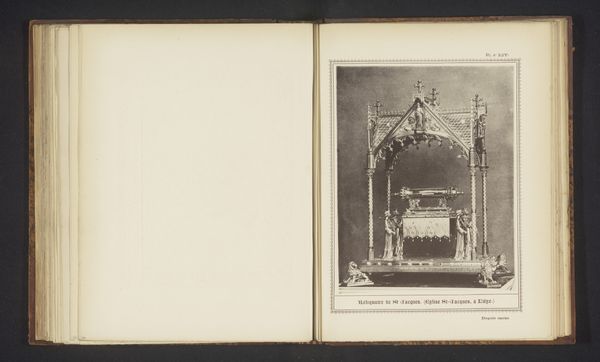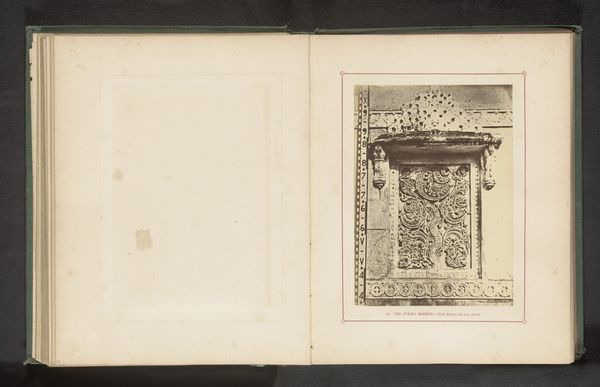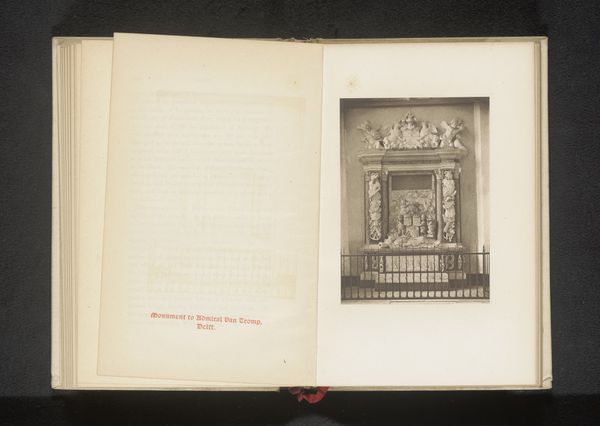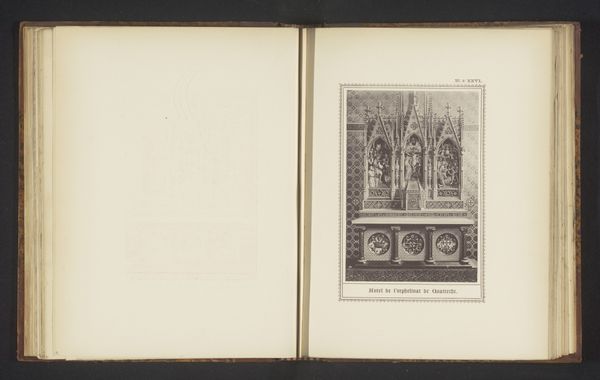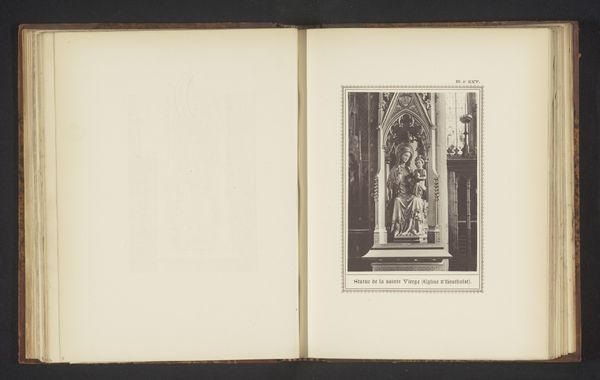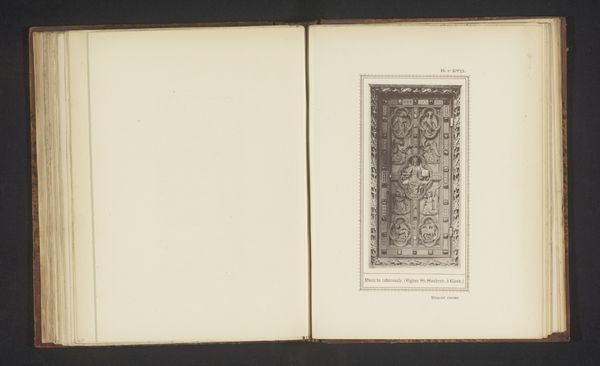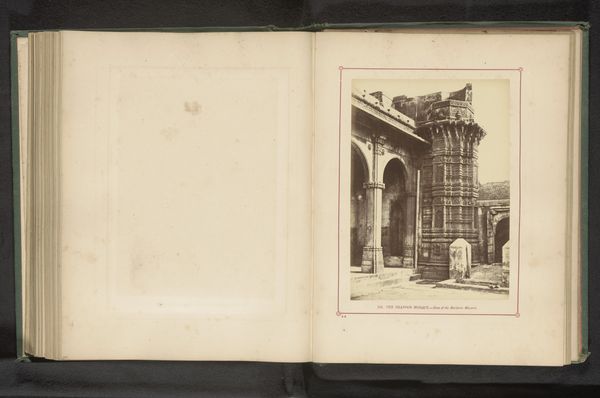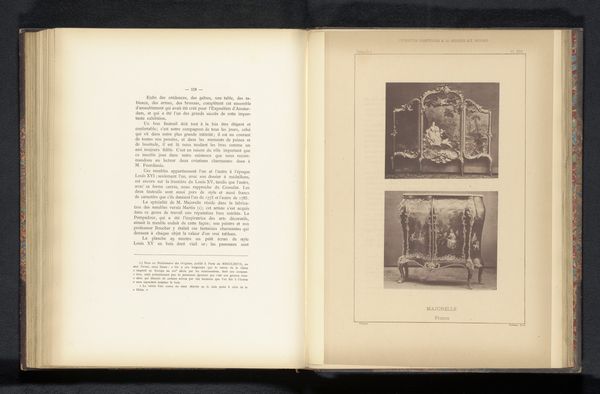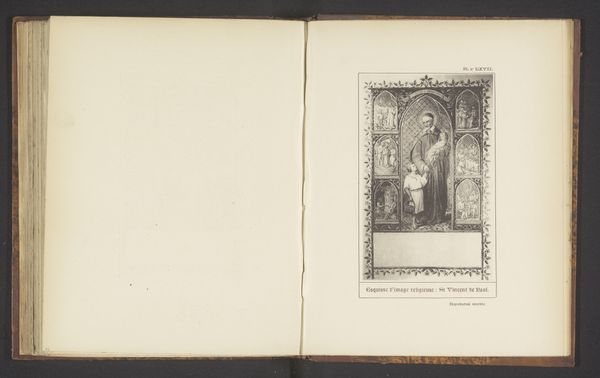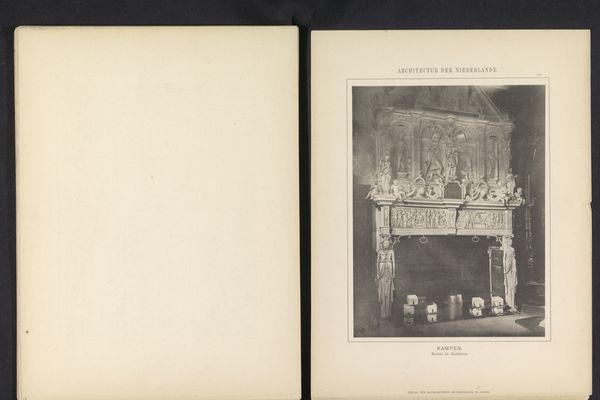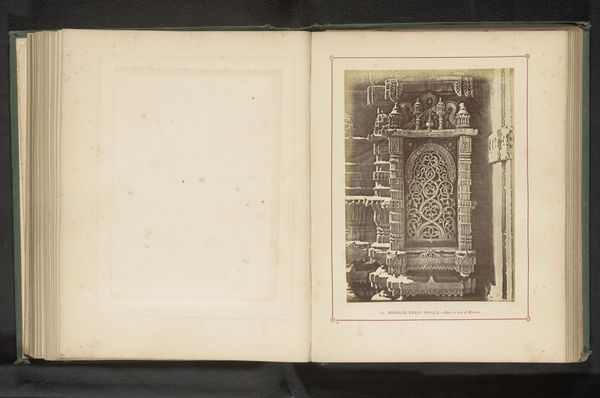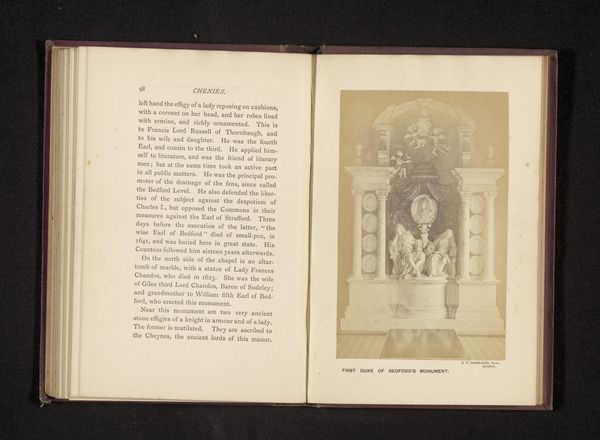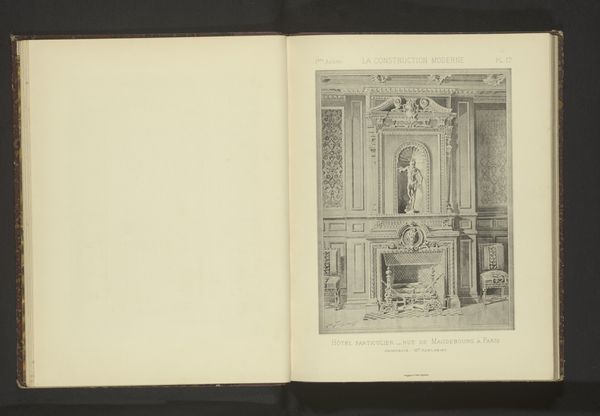
Beeld van Christus aan het kruis met aan weerszijden een beeld van Maria en een beeld van Jozef in Sint-Amandsberg, België before 1896
0:00
0:00
print, photography
#
portrait
# print
#
figuration
#
photography
#
realism
Dimensions: height 152 mm, width 104 mm
Copyright: Rijks Museum: Open Domain
Curator: This photogravure captures a sculptural tableau inside a church in Sint-Amandsberg, Belgium, sometime before 1896. The photographer is Joseph Casier, and the subject is "Beeld van Christus aan het kruis met aan weerszijden een beeld van Maria en een beeld van Jozef." It roughly translates to "Image of Christ on the cross with images of Mary and Joseph on either side." Editor: My immediate impression is that the atmosphere here is really somber, and rather enclosed. There is the weight of tradition—the formal symmetry, the rather forbidding altar. Even the textures, everything about the tiled walls seem designed to instill in visitors both fear and deference to a stern and paternal God. Curator: Absolutely, and it is within that framework of social hierarchy and religious expectation that we must unpack this composition. Consider how the iconography of the crucifixion itself— the body in torment— functions within a system of control, asking the subjugated to endure suffering under earthly authority, much like Christ himself. The arrangement around the altar really drives this home. Editor: Right, Mary and Joseph aren't just passively present; they are positioned flanking the figure of Christ, visually reinforcing established cultural associations with divine law, family duty, guilt, but most of all redemption via religious authority. You'll notice there are candle platforms right under their statue, the perfect cultural icon for religious guilt trips. Curator: The realism of the photograph itself adds to the gravity, doesn't it? There is something about the black and white that amplifies the sense of austerity, reflecting perhaps the lack of social freedoms experienced by those devout believers whose lives revolved around such images and churches. It's a direct gaze into a space designed to shape, regulate, and also perhaps offer solace within restrictive lives. Editor: Yes, the directness really emphasizes the psychological effect, and especially the shadows playing across the textures—that heightened contrast only magnifies that very specific mood. And it all feels so deliberate—a careful arrangement to both inspire and perhaps intimidate. Curator: A point well taken. And thinking critically about the photograph, as with all works, provides valuable perspectives into the power dynamics embedded within cultural memory. Editor: Exactly, seeing the past with eyes wide open, that's what gives these photographs continued relevance.
Comments
No comments
Be the first to comment and join the conversation on the ultimate creative platform.
